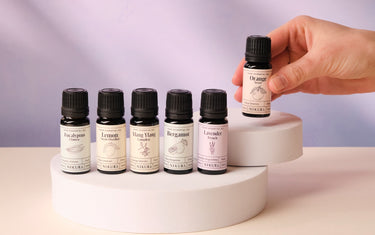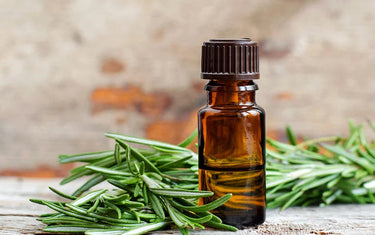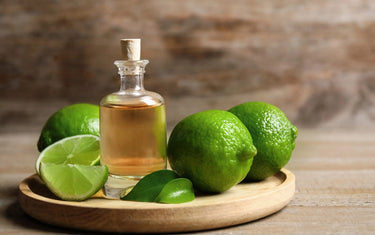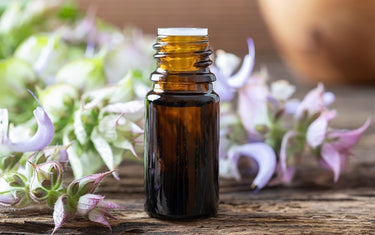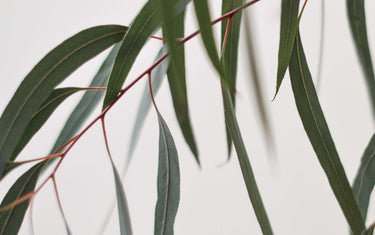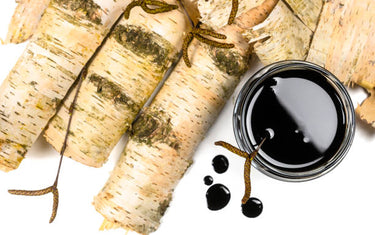4 min read / 1 November 2023 / yasmin sharp
Lavandin vs Lavender: What's the Difference?
Explore the subtle distinctions between lavandin and lavender.
Share this post

When shopping around for lavender essential oil, you may have come across lavandin essential oil, which look and smell very similar to each other.
This probably explains why so many people compare lavandin vs lavender, as it is easy to confuse one with the other.
You may already know a lot about lavender essential oil, but perhaps not as much about lavandin.
We’re here to change all of that, as we explain more about the origins of lavandin essential oil, what makes it different from lavender and some of the health benefits it can offer.
What is lavandin?The lavandin plant, which is also referred to by its botanical name Lavandula hybrida, is a hybrid of the lavender varieties Lavandula latifolia (spike lavender) and Lavandula angustifolia (true lavender). Lavandin is produced via the cross-pollination of the spike lavender and true lavender varieties of lavender. Bees travelling from the higher reaches of the French mountains carry pollen down to areas filled with true lavender, where cross-pollination with the spike lavender plant occurs. |
Lavandin oil vs lavender oil: what’s the difference?
Upon first glance, lavandin and lavender appear to be very similar in appearance, although there is a difference in height.
And not only is lavandin taller, but it also produces fuller blooms.
Upon closer inspection, you may also notice that the calyx (the first part of a flower attached to the stem) has an elegant lavender hue, whilst the calyxes of true lavender plants are greener in colour.
The plant’s aroma is classed as a middle-to-top note, as it initially smells bright and intense before quickly fading away.
Whilst it still carries the sweet-floral undertones tones of lavender, it has a slightly more herbaceous body.
The synthesis of the two lavender varieties creates a unique scent that aromatherapists note as being somewhere in-between the two aromas.
Compared to lavender essential oil, you will find lavandin essential oil is listed in the ingredients of a wide range low-priced cleaners, soaps and detergents.
It is also frequently used in vegan, all-natural and eco-friendly body lotions, shampoos, shower gels and more.

What are the benefits of lavandin essential oil?
When looking at lavandin vs lavender essential oil, it’s also helpful to understand more about the benefits of lavandin oil, as many people are already aware of how lavender can be useful.
1. Stronger scent
Lavandin contains more camphor and 1,8 cineole than lavender essential oil, which gives it a stronger, sharper scent.
When seen in combination with its lower price point, it is easy to see why lavandin is such an attractive ingredient option for so many brands and manufacturers.
2. Skincare properties
As we have mentioned, lavandin is used in a wide range of beauty products, with active ingredients linalool, linalyl acetate, camphor and cineol all offering health benefits for skin.
When correctly diluted with a carrier oil, lavandin can help with the treatment of wounds, whilst providing protection against harmful bacteria.
Its application can also deliver some relief from painful, menstrual cramps.
3. Aromatherapy healing
Due to its stronger scent, lavandin essential oil works as a wonderful aromatherapy remedy, helping people to manage feelings of stress and anxiety when used in a diffuser or oil burner.
Another great way to enjoy lavandin essential oil is by adding a few diluted drops into warm bath water, allowing the aroma to disperse around the bathroom as you unwind and relax.
4. Sleep support
Lavender essential oil is widely recognised as the natural go-to option for many people who experience difficult sleep patterns.
You can use lavandin in the same way as lavender, which includes placing a few drops on your pillowcase to help you drift off or diffusing the oil in the bedroom an hour or two before you hit the sack.

Lavandin essential oil precautions
As is the case with many other essential oils, pregnant and nursing people should not use lavandin essential oil, unless otherwise advised by a medical professional.
This is also true of people who have heart-related conditions, hormone-related ailments, epilepsy, skin disorders or allergies.
Due to the highly concentrated nature of lavandin essential oil, you should always dilute with a carrier oil before topical application.
However, it can still cause some sensitivity and allergy issues in some individuals, so it is a good idea to complete a patch test before using it on your skin.
To complete a patch test, dilute a small amount of lavandin essential oil with a carrier oil and apply to the inside of your elbow.
Cover with a plaster for 24 hours and if you do not see any signs of irritation, the oil should be safe to use.

So, the next time someone asks, “Lavender vs lavandin - which one is better?” hopefully you can use some of the information we’ve provided to give a more detailed reply.
Of course, everyone has their own scent and aromatherapeutic preferences, so the answer to the question will be different for everyone.
Whether you prefer lavandin essential oil or lavender essential oil, the important thing is to always use them with care, especially when it comes to topical application.

